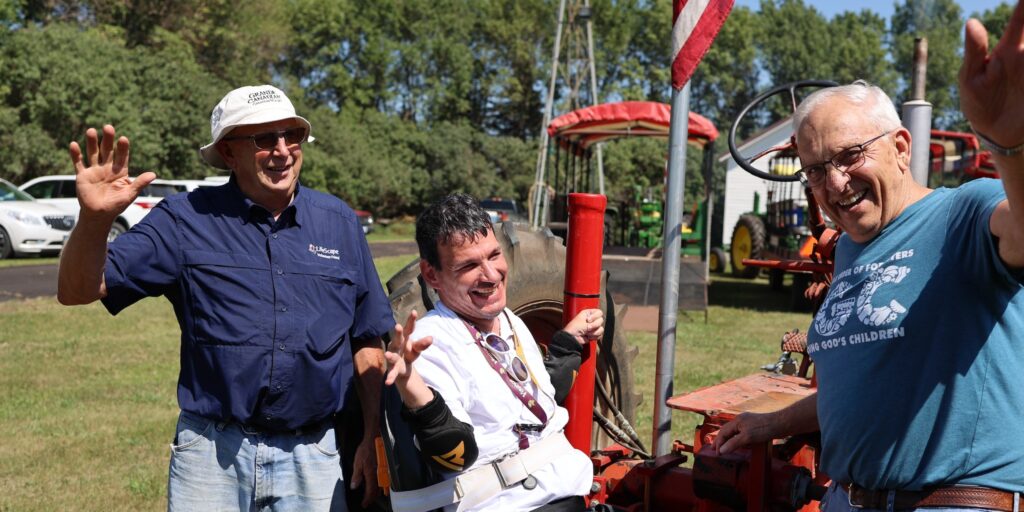More than a marker: Effort takes shape to restore obelisk with complex history
Before there was a prison overlooking a meatpacking plant, before there was anything more than a cavalry fort in downtown Sioux Falls, there was a view.
Looking south over the valley, the Big Sioux River tumbled down an outcropping of pink quartzite, just rolling hills and grass in all directions.
It’s what the Native Americans and first settlers of Sioux Falls saw from this point, near what is today North Cliff Avenue where it crawls up from the riverbed.
And it was in this area in 1862 that a Dakota scouting party encountered Judge Joseph B. Amidon and his son, William, who were cutting hay. The judge and his son were killed as part of the broader Dakota War, a six-week conflict across southern Minnesota between the Dakota and the U.S. military.
In the big picture, the uprising ended with the hanging of 38 Dakota men in Mankato, Minnesota. It was the largest mass execution in U.S. history.
The killing of the judge and the broader conflict drove the settlers from Sioux Falls to the safety of the territorial capital in Yankton. They wouldn’t return for three years.
That is the background of a current reality. The 25-foot pink quartz obelisk that sits on this spot today, unseen and ignored by most of the city’s population, has a complex history. Or more specifically, the context of what it represents is complicated.

And it needs help.
The Minnehaha County Historical Society is raising money to restore the marker, which needs tuck-pointing to repair the joints between the stones.
It also needs security. For most of its history, the marker was alongside a road that connected Madison Street to Cliff Avenue. The streets in the area were reconstructed several years ago. Today, the road ends at the marker, meaning there’s no through traffic and many fewer eyes on the location.
That has allowed vandals and litterers to linger without much fear. Graffiti is a problem.

“This has got to be fixed and saved,” said Sheri Watke-Shively, a member of the historical society.
“We have a long-term plan. We would like to make it a destination point with some gardens and picnic tables. Lighting would be really fabulous.”
Watke-Shively estimates it will cost $15,000 to do the tuck-pointing repairs and $10,000 for improvements such as lighting. The society has raised more than $3,000 so far, and an anonymous donor has agreed to match $5,000 of individual donations.
The group also is applying to the Deadwood Historic Preservation Commission, which awards grants for restoration projects across the state.
Which brings us back to the context.
The obelisk itself doesn’t represent the significance of the Amidon Affair. Rather, the inscription honors the early settlers who “built homes, farms and businesses and planted their family roots in Minnehaha County.”
It wasn’t that the designers didn’t know about the site’s historical significance. In fact, early versions, first drawn up in the 1920s included homage to Judge Amidon.

But that’s not what they ultimately built.

Siouxland Heritage Museums
It wasn’t until 1991 that the full context was presented on a separate plaque that stands near the obelisk. The double-sided plaque was one of dozens placed around the city by the Minnehaha County Historical Society to mark and explain significant places and events.
The plaque gives the background of the Dakota War and the unfortunate confluence of the conflict and the Amidons’ haying.

Taken together, the two elements tell the sliver of a story of the city’s history.
“I’m a die-hard historian,” said Watke-Shively, who owns Antiques on Old 8th. “I believe in saving everything possible in this town because we’ve torn down more than we’ve saved. It’s very difficult for me to see anything old ruined.”
The group meets the third Thursday of every month at the Old Courthouse Museum, 200 W. Sixth St. You can learn more about its efforts, how to join and donate to the restoration project at minnehahahistory.org.
It’s easy to see how the obelisk could get crossways in a conversation about the importance of Native American history and culture. In this regard, South Dakota is the backdrop for so many of the significant moments of cultural clashes and, hopefully, long-term growth and understanding.

Watke-Shively said all aspects of our past – good and bad – must be captured and saved.
“I just think we need to preserve every aspect of history. I don’t care whose it is,” she said. “It’s important to know who we all are, where we came from and respect everybody. We all have a past.”
It’s a spot that Sioux Fallsians should experience, to imagine what it was like in those early days, before the prison, the meatpacking plant and the downtown skyline.
“The view is just incredible,” Watke-Shively said. “We have the most wonderful parks in the Midwest. Let’s make this a little park.”
Share This Story
Most Recent
Videos
Want to stay connected to where you live with more stories like this?
Adopt a free virtual “pigeon” to deliver news that will matter to you.





























